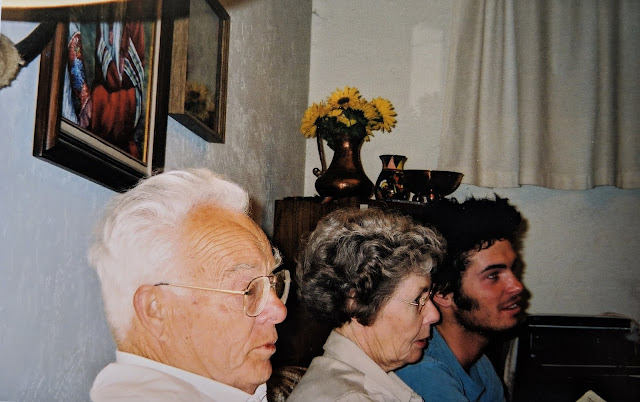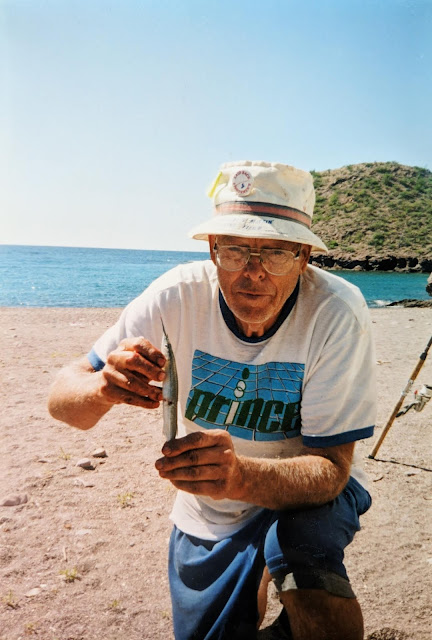Earlier this month, Tennery Norton asked me to write an essay about Christmas. She works with a BYU radio program called Constant Wonder (kind of a Reasons to be Cheerful sans David Byrne). She invited me to connect Christmas with something from my experience as a scientist.
My first thought was about permafrost and the tenacity of microorganisms because nothing screams Christmas like anaerobic respiration, right? I had recently participated in a permafrost synthesis project led by Sue Natali about microbes who stay active through the winter in the frozen soil of the Arctic and Boreal biomes. They grow slowly in the unfrozen films of water throughout the soil, but their combined respiration has already tipped the permafrost zone from a carbon sink to a carbon source. But I was feeling tired of permafrost and decided to think about something different. The transcript of the radio essay that aired last week is below.
Though it was not the season of Christ’s
birth, we celebrate Christmas near the winter solstice. In the Northern Hemisphere,
where this tradition began, the solstice is the darkest and coldest time of the
year. As an ecologist, I can’t speak to the historical origins of this
tradition, but I can describe what causes seasonal fluctuation in light and
heat and what this means for the Earth system.
The Earth rotates on an axis that is tilted
about 23 degrees to one side. This tilt was set during the Earth’s creation,
billions of years ago. Planetesimals—the unorganized bits of dust, rocks, and
other material present in the early solar system—coalesced under the force of
gravity, and imbalance in the collisions tipped the growing planet a few
degrees on its side. The Earth got a final push from an astronomical body about
the size of Mars that slammed into its surface 4 and a half billion years ago.
The impact transferred so much energy into the Earth that its surface melted
into a global sea of magma, and a huge geyser of material was ejected into
space. This debris eventually glommed together into our moon. The weight of the
moon stopped the tipping of the Earth and stabilized the wobbles of its axis—a
sort of gravitational Hula hoop.
The Earth’s tilt creates seasonal changes in
the amount of sunlight reaching its surface as we revolve around the sun. The
passionless geometry of a tilted sphere creates one of the only fair things
about our mortal existence. Whatever latitude we live at, each of us receives
the same duration of illumination from the sun: about 44 hundred hours each
year. Whether you live on the North or South Pole where the sun rises and sets
once a year, or on the equator where the length of each day is the same; half
the year the sun is up, half it is down. Though this
annual allotment of sunshine is completely fair (in a Solomon sort of way), the
tilt of the Earth creates seasons—pulses of energy that ripple through all life
on Earth.
When the Northern Hemisphere is tilted toward
the sun, it receives more light and heat, a condition called summer. Longer
periods of light stimulate the photosynthesizers—the land plants and aquatic algae
that harvest carbon from the atmosphere and release oxygen. The Earth breaths
in. The extra heat melts snow and ice, providing water for ecosystems and people
and exposing habitat. This triggers migrations for insects, fish, mammals, and
birds, some of which travel halfway around the world to find a place to breed
or feed. The early sunrise makes it a little easier to get out of bed for us humans,
whose modern schedules don’t change much with the seasons.
But after the summer solstice, the Northern
Hemisphere turns away from the sun. The days shorten and the temperature drops.
Without as much sunlight, the photosynthesizers can’t keep up with the consumers
and decomposers who use oxygen and return a portion of the plants’ carbon to
the atmosphere. The Earth breaths out. I have a harder time getting out of bed
and many people experience seasonal depression and somber states of mind. This
darkening lasts half the year. From June to December, each day is darker than
the last.
At the moment that our hemisphere is farthest
from the source of energy and light that sustains all life on Earth, we celebrate
Christ’s birth. As a Christian, the timing of this remembrance seems important.
Many scriptures liken our Savior to light. Some go as far as to say that he is
light—a being in whom there is no darkness at all. But what defines Christ for
me and what symbolizes my relationship with him is not the purity or intensity
of his light. It is the location and timing of his light—the where and when.
John emphasized this when he first introduced
the Savior. Christ is not only the light of the world, he is the light that “shineth in darkness.”
There are plenty of bright things in the
universe. Until it swells and collapses some 5 billion years from now, our sun
will never stop shining. Despite this constancy, the sun is often inaccessible
to us individually, and sometimes, like at the winter solstice, it is distant
from many of us at the same time. Apparently, it is not enough to be bright. It
is not even enough to be constant.
Zacharias prophesied of John the Baptist who
was a preparer and type of our Savior. He said, “thou, child, shalt be called the prophet
of the Highest: for thou shalt go before the face of the Lord to prepare his
ways… To give light to them that sit in darkness and in the shadow of death, to guide our
feet into the way of peace.”
Christ doesn’t just broadcast light randomly into
the universe like the celestial spheres I described before. What is so
remarkable about the love of our Savior is the way he brings light to us. He
delivers it personally, privately, quietly, and then he stays. Even when we sit
in darkness on the far side of a planet. Even when it has been so long that we can’t
remember what light feels like. He is there, with us in the darkness.
I can’t speak for you, but I find myself in
darkness often. A friend diagnosed with cancer. A child unsure of a parent’s
love or the love of God. A refugee without home or friends. A couple that
hasn’t touched for months or years. A future that seems to hold no savor or
anticipation. The disappointment of letting someone down who depends on you. Even
in my ecological research, I am sometimes confronted with overwhelming sadness
and darkness. Pollution in our air, water, and soil kills at least 12 million
people every year—twenty times more than all homicides and wars combined—yet
there still isn’t agreement or political will to abandon the dirty fossil fuels
that are primarily responsible for this suffering.
In the face of all this darkness, it is easy
to hate and resent the shadow. Indeed, this allergy to dark is rooted in an
important instinct. As children of light, we are called to prevent or heal the
suffering of needless, artificial darkness with all our force and resources.
But some of the darkness we experience serves a purpose—or it can if we see it
in the right light. One of the great paradoxes or miracles of our Earthly
existence is that darkness provides a contrast without which the light would
mean nothing.
In the modern world, we seem to have
forgotten this distinction. We use our technology to banish all darkness, harmful
and good. Our lust for constant light, even in times of natural darkness, has
driven us to exploit all sources of energy, no matter the personal or communal
cost. The fossil fuels that we extract from the Earth are metamorphosed light
that was captured by plants hundreds of millions of years ago. Rather than waiting
for the natural light to return in the morning or spring, we’ve harnessed this
power to flood the world with artificial light. The pressure to be ever moving
and ever connected pollutes our air, disrupts our climate, and disturbs our
sleeping patterns as we worship our screens until the moment before losing
consciousness. Ironically, excess artificial light now obscures God’s miracle
of stars in the night sky for most people on Earth.
At least during our mortal existence, Christ
doesn’t erase the darkness around and within us, though he can transform it,
when we let him. If we hope to follow the Savior’s path, we must not fear the
dark. Christ asks us to examine the sources of fear and hatred within ourselves—our
internal darkness—and to be vessels of his love for those who feel far from it.
Celebrating Christ in the darkest days of the
year reminds us that he “descended below
all things, in that he comprehended all things, that he might be in all and
through all things, the light of truth,” as we learn in modern LDS
scripture. On a personal level, Christ coming at the time of greatest darkness
and cold is a reminder that our greatest suffering and disappointment can prepare
us for our deepest and most lasting peace. At this time of light in the dark,
let us not forget Peter’s promise that Christ is “a light that shineth in a
dark place, until the day dawn, and the day star arise in your hearts.”


































